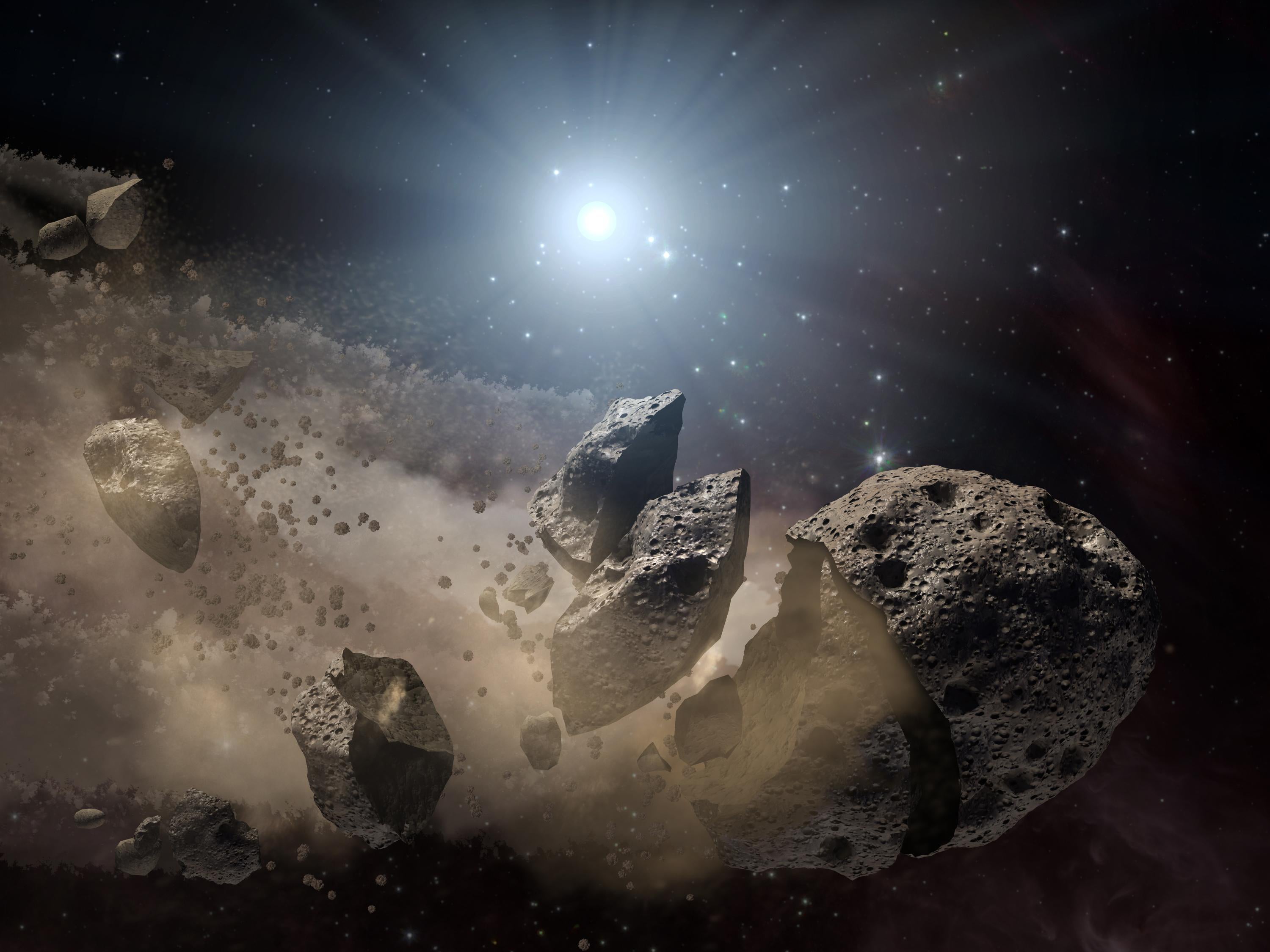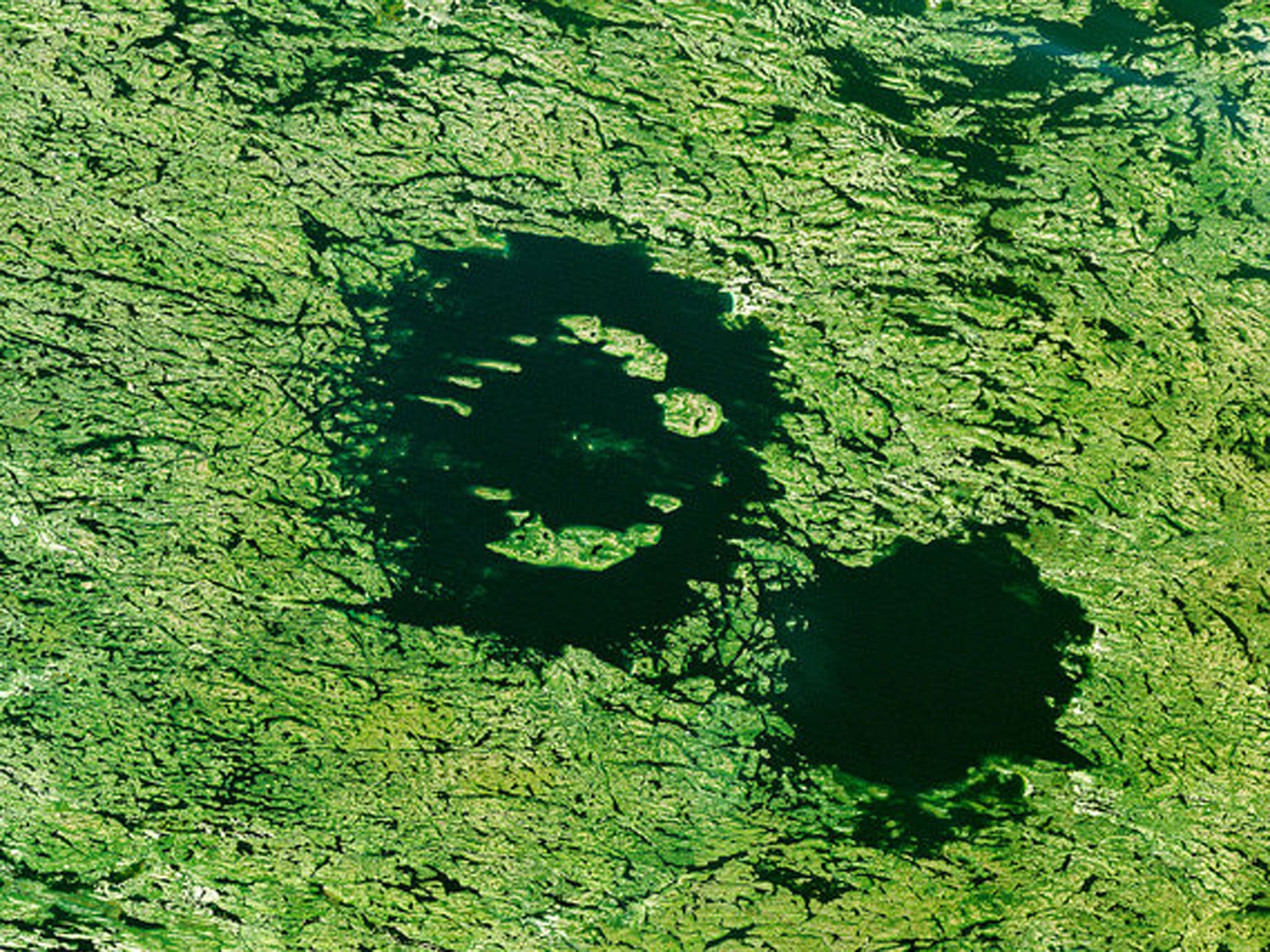What's worse than one asteroid hitting Earth? Scientists identify double impact crater
Binary asteroid systems create 'doublets' - twinned impact craters

Your support helps us to tell the story
From reproductive rights to climate change to Big Tech, The Independent is on the ground when the story is developing. Whether it's investigating the financials of Elon Musk's pro-Trump PAC or producing our latest documentary, 'The A Word', which shines a light on the American women fighting for reproductive rights, we know how important it is to parse out the facts from the messaging.
At such a critical moment in US history, we need reporters on the ground. Your donation allows us to keep sending journalists to speak to both sides of the story.
The Independent is trusted by Americans across the entire political spectrum. And unlike many other quality news outlets, we choose not to lock Americans out of our reporting and analysis with paywalls. We believe quality journalism should be available to everyone, paid for by those who can afford it.
Your support makes all the difference.Imagine Bruce Willis at the end of Armageddon, riding an Earth-bound asteroid wired with dynamite and preparing to blow the charges and save the planet. He turns around, only to see – another asteroid. Also headed for Earth. Without explosives.
It sounds improbable even by Hollywood standards, but according to a recent investigation by a team of scientist such a double impact rocked the Earth 458 million years ago.
Dr Jens Ormo and his team from the Centre for Astrobiology in Madrid, Spain analysed tiny, plankton-like fossils in two neighbouring craters in Sweden, coming to the conclusion that the pair were formed by a binary asteroid strike some time in the Ordovician Period.
The site in Sweden is one of several proposed double impact craters, but other scientists have warned that although the two may seem contemporary, they could have been created years apart and that our current methods of dating these impacts is simply not precise enough.
Despite this, astronomers say that binary asteroids are actually quite common and that nearly 15 per cent of near-Earth asteroids have twins. These pairs are thought to form when a type of asteroid known as a “rubble pile” (one consisting of numerous lumps of rock drawn together by gravity) begin to spin quickly as they’re warmed by the Sun, eventually throwing off a piece of rock to form a tiny moon.

However, not every asteroid pair forms a double crater as it hits the Earth, as the objects are often too close together to form distinct indentations. Because of this, scientists calculate that only 3 per cent of impact craters are so-called doublets.
Dr Ormo has suggested that the pair of Swedish craters known as Lockne and Malingen are a possible double impact, after drilling down into the formations to retrieve tiny fossilised sea creatures known as chitinozoans and dating them to the same general time period.
The space between the two craters also suggests that they were the result of a double impact. The 16 kilometre distance is close enough that the two asteroids would have been pulled together by gravity, but far enough for the craters to not have overlapped.
However, it remains impossible to say for certain. Dr Garteh Collins, who studies impact craters at Imperial College London but was not involved with the research, told the BBC: "Short of witnessing the impacts, it is impossible to prove that two closely separated craters were formed simultaneously.
"But the evidence in this case is very compelling. Their proximity in space and consistent age estimates makes a binary-impact cause likely."
The research by Dr Ormo will be presented at the 45th Lunar and Planetary Science Conference in The Woodlands, Texas, with the findings to be published in the Meteoritics and Planetary Science journal.
Join our commenting forum
Join thought-provoking conversations, follow other Independent readers and see their replies
Comments